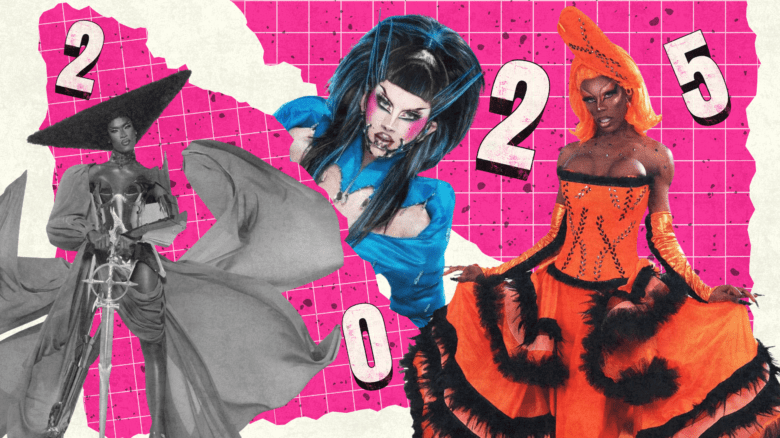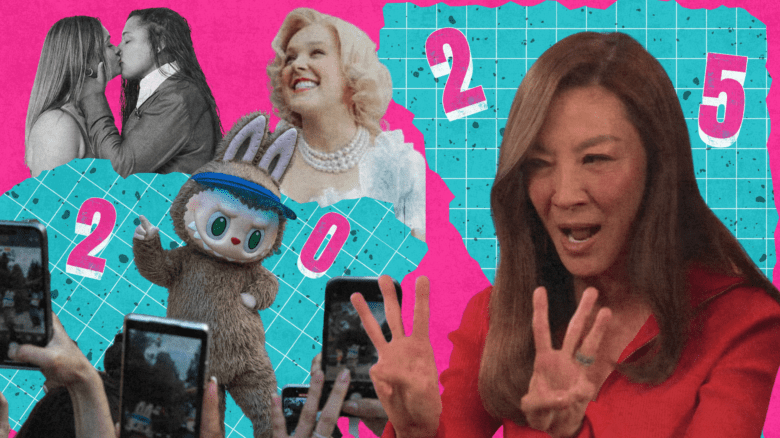Five years ago, a few months after I came out, I engaged in a prolonged flirtationship with a woman 13 years older than me.
I was new to queerness and adulthood; I was in college and fumbling my way through sexual experiences, often feigning drunkenness for romance. She and I met at a gala dinner hosted by the LGBTQ2 organization where I was interning, and standing side to side, unconcerned by the celebrity of the evening’s speakers (a future presidential candidate, a straight actress) we spoke of our lives.
Some spate of knowingness came over me; what was happening and what I wanted from her was particularly adult and specifically queer. Unable to speak my desires into the space between us, I held her eye. Measurable time collapsed in on itself, transmuting hunger into a queer moment of wanting, a thin line of eye contact ballooning into all of the things we could not, or would not, say. Later I would learn that kind of eye contact is a part of being queer: Self-silence and wanting, like a snake chasing its own tail, we look and we want over and over again. I’ve made plenty of eye contact since that evening, fallen in love and forgotten about her, but I found myself coming back to the memory when I watched Alice Wu’s The Half Of It for the first time.
“I would learn that kind of eye contact is a part of being queer: Self-silence and wanting, like a snake chasing its own tail, we look and we want over and over again.”
The Half Of It, Wu’s long-awaited follow-up to her 2004 queer love story Saving Face, is a study in unspoken desire and queer wanting. It’s a practice in queering wanting, exploring how we show what we want, when we say what we want and what happens when we don’t—which is to say, it’s a movie about eye contact.
Set in small-town Washington, The Half Of It is a queer retelling of the 19th-century play Cyrano de Bergerac. In the original version, an emotionally intelligent yet unattractive man helps an attractive but uninteresting man court a woman with whom they both fall in love. Ellie Chu (played by Leah Lewis), a queer and closeted Chinese-American high school senior is the “unattractive” but intelligent character, and Paul Munsky (Daniel Diemer), a prototypical straight, white, cis American jock is the second.
Through the letters (and later, texts, because this is 2020) Ellie writes “as” Paul, they both deepen their feelings for Aster Flores (Alexxis Lemire), a popular and beautiful girl who, in her awareness of her privileged space in the world, is both resentful of others’ assumptions and scared to move beyond them. Each character (though they might not understand the meaning) wants to love and be loved—but under all of that are bigger wants.
Ellie, whose mother passed away when she was in middle school, wants to be able to rely on her father and she wants to leave her predominantly white town of Squahamish (a fictionalized version of many in the state named for the Indigenous peoples that stewarded the land for millenia). Paul wants to stay in Squahamish and take over the family business, but no one—especially his family—takes him seriously. And Aster wants to know herself and be less afraid of the world; she is Latina and “passes” for white, and while neither her opinions nor her body challenge the world around her, she wants to take up space.
Stuck in a town that represents a different kind of hell to each of them— cisheteronormativity, self-disbelief, safety in mediocrity—Ellie, Paul and Aster spend a year trying to get close to one another and far away from the place where they grew up, which is also the place that facilitates their falling in love. These different hells are what make each character acceptable. Ellie, Paul and Aster have access to something the other wants: Ellie desires to move through public space with ease, like Aster, and Aster wants to know what she stands for, like Ellie. Paul desires Ellie’s way with words and Ellie wants Paul’s socially-accepted space to express them.
Paul is afforded, by his whiteness, masculinity and cisheterosexuality, the social space for self- exploration and public displays of affection, but he chooses to communicate with Aster through Ellie’s letters because, as he says, “I’m no good with words.” Ellie writes letters because she cannot speak of her desires for Aster out loud, and Aster writes back because she feels seen by Ellie’s version of “Paul.”
Each of them write and talk about desire, relationships and falling in love, though they hardly know what these things are. After months of writing love letters on his behalf, Ellie asks Paul: “How do you know if someone wants to be kissed?” Paul responds, “They give you a look.” Ellie doesn’t understand. “A look?” she asks. Paul demonstrates his straight version of eye contact; Ellie laughs, their conversation moves elsewhere.
“Eye contact exists, in part, as a response to the dangers that may await queer people when we speak our desires out loud.”
I liked this explanation, and Ellie’s reaction, for both embody the liminality of eye contact. Queer eye contact is beautiful because there’s elegance in not needing words to communicate desire. But it’s hard because eye contact exists, in part, as a response to the dangers that may await queer people when we speak our desires out loud—rejection and violence enter in their many forms.
Ellie experienced this eye contact a few months earlier. In the first scene the two share, Aster helps Ellie collect her books from the floor after a dumb jock (who is also, coincidentally, Aster’s boyfriend) bumps into her. Squatting on the floor, Ellie looks up and says, “I’m Ellie Chu.” “Yes, I know,” Aster replies, and they hold half a second of eye contact. Watching this scene, I felt a buzzing in my ears, held my breath and waited for a kiss. But the characters push the desire away. Instead, Aster hands Ellie one of her books, reading the cover aloud, “Remains of the Day, loved it. All that barely repressed longing.” “Yes, Aster,” I thought. “All of that barely. Repressed. Longing.”
We’re socialized to think that queerness has a specific aesthetic, when really sexuality can be embodied and presented in any way. Femme girls like Aster are often read as straight-presenting, and the possibility of misinterpreting eye contact makes acting on one’s desires dangerous. Cis men who make bold gestures to cis women and read their eye contact as wanting-to-be-kissed are generally thought of as romantic, and risk none of the social status, opportunity or safety queer people do when we show affection in public space. Aster might have been trying to say something to Ellie that day in the hallway, but eye contact exists because you can’t just say: Are you queer?
There were other moments when I expected Ellie and Aster to make something of their eye contact, but The Half Of It is less concerned with what happens after eye contact than the eye contact itself. Wu understands—and communicates through her characters—that eye contact itself is a tool for those belonging to all sexualities, deployed in particular by queer people not because if its ease, but in spite of it. Eye contact challenges you to make yourself seen even as you’re trying to hide. Queering forms of communication (in this case, eye contact) makes connection available to queer people, and expands the ways of wanting and loving for everyone who wants and loves—even straight people.
“Queer flirting is limited to moments of eye contact that feel exciting and frail, fulfilling and never quite enough”
Heteronormative conceptions of desire involve speaking and position want that is heard as articulated desire. In queering eye contact, The Half Of It also queers speech, pushing us to see that eye contact is a form of bodily speech. This again is a reaction to the cisheternormative policing of desire and the expansion of the ways queer people navigate threats of violence when we want to say, as Ellie so clearly does, I like you. We crush on others and protect ourselves simultaneously; queer flirting is limited to moments of eye contact that feel exciting and frail, fulfilling and never quite enough.
The film’s climax is a scene in which the three love interests appear together for the first time. Paul approaches Ellie at the vending machine after his football game. “Hey,” he says to Ellie, cautiously. “What?” she responds. They pause for half a moment, holding eye contact—Ellie’s is quizzical, Paul’s is yearning (all that barely repressed longing)—and he kisses her. Misreading the eye contact, he kissed without asking because he’s no good with words and he’s been socialized to communicate his love out loud.
Ellie pushes him back. “Is it someone else?” Paul asks. Aster comes into focus, she looks hurt and then retreats. Ellie yells after Aster, “It’s not what you think!” Paul finally understands what we, the audience, have known all along, “You like… Aster,” he says to Ellie—not quite a question, not quite a statement. “You’re going to hell,” Paul whispers in a quiet verbal assault, and walks away. Ellie is alone.
Years ago, at the gala dinner, I made eye contact because I didn’t know what I wanted to say aloud. I’m reminded by The Half Of It how overwhelming a queer crush can be: The tectonic plates of learning a new person and perfecting the language of eye contact pushing against each other. No longer a baby but still a child in gay years, I don’t consider myself new to queerness or eye contact anymore. I still struggle with speaking my desire out loud, partly due to my shyness and partly, I believe, a result of so much closeted looking and self-questioning.
When I watched Wu’s film for the first time, I was so obsessed with the idea of an open queer relationship flourishing in a small town that I missed the other things that were happening. I watched the movie again and saw what I hadn’t before: how Ellie relies on her friendship with Paul more than she wants Aster, and how Aster, who may be queer, isn’t really ready for a relationship with anyone—she gives the cis boys around her what she thinks they want, a result of her own self-unknowingness. On the third watch, I got something totally different: The Half Of It isn’t about wanting, it’s about being seen. Maybe that’s the queerest desire of them all.

 Why you can trust Xtra
Why you can trust Xtra


